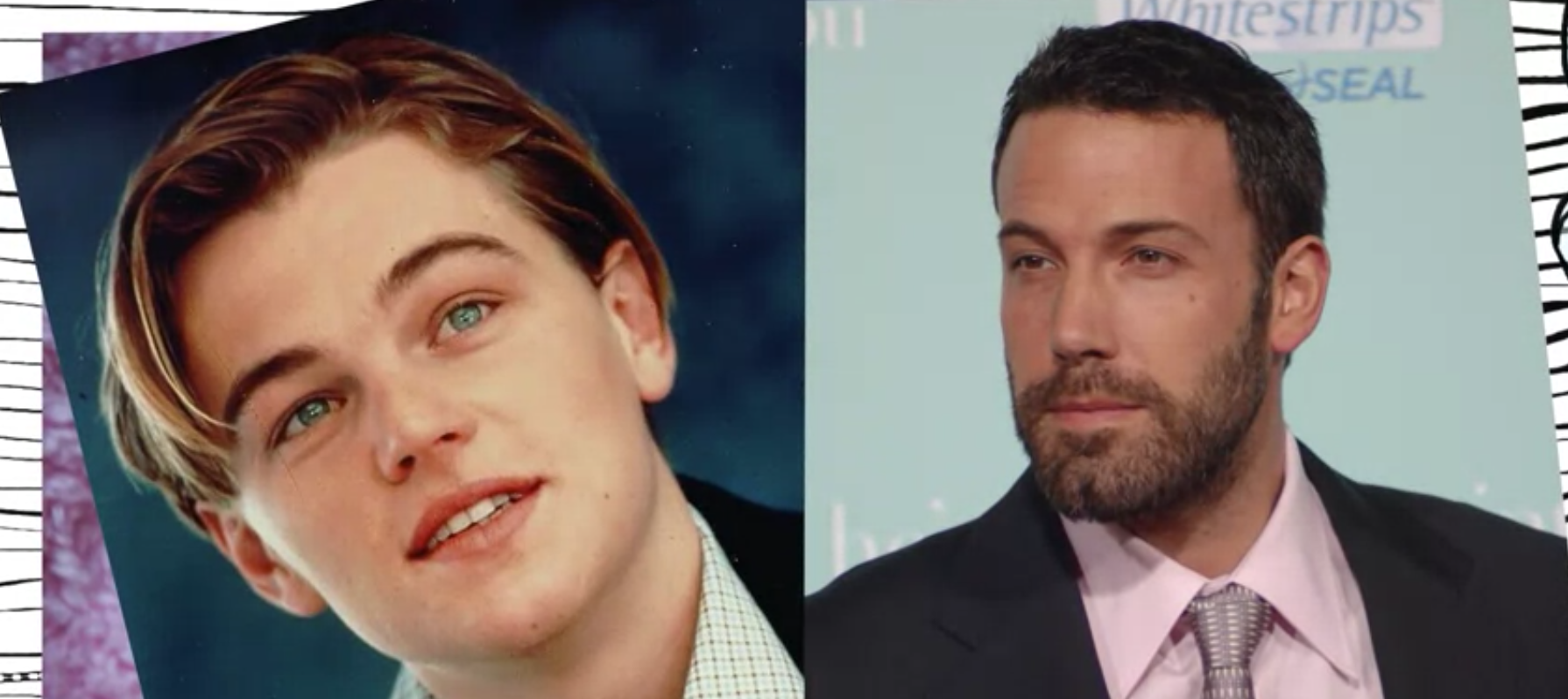7.3 Attachment
Animals have evolved to be nice to kin.
- Birds and mammals v.s. fish and reptiles: Birds and mammals invest in quality, not quantity. We have relatively few offspring so, it’s important that we take care of them and that they survive.
- A long period of dependence prior to sexual maturity. We have slowed down our course of growth and this is a biological adaption. We spend time learning and adapting to our environment before being separate and distinct agents.
- Two separate psychological stories
- How parents respond to children (parent’s attachment to child)
- we are wired up to respond to their distress calls which would be like crying in humans,
- we’re wired up to find them cute
We tend to think of adults with baby faces (Leonardo DiCaprio, left) more as naive, and helpless, kind, and warm. Even though we can tell that they’re not really younger. We don’t think of adults with male testosterone face (Ben Affleck, right) the same way.

- How children respond to parents (child’s attachment to parent)
- attach to whoever’s closest, whoever takes care of them
- a young baby will typically prefer the voice, and face, and smell of the mother
- when the baby can explore to cuddle around, it will come back to the mother
- What’s the psychological mechanism underlying that?
- cupboard theory (BF Skinner): the mother is rewarding
- innate tendency (Bowlby): there are two forces. One is a positive force. Babies are drawn to her mother for comfort and social interaction and physical warmth. There is a negative force. A fear of strangers drives babies away from individuals who aren’t familiar with who they aren’t attached.
- How parents respond to children (parent’s attachment to child)